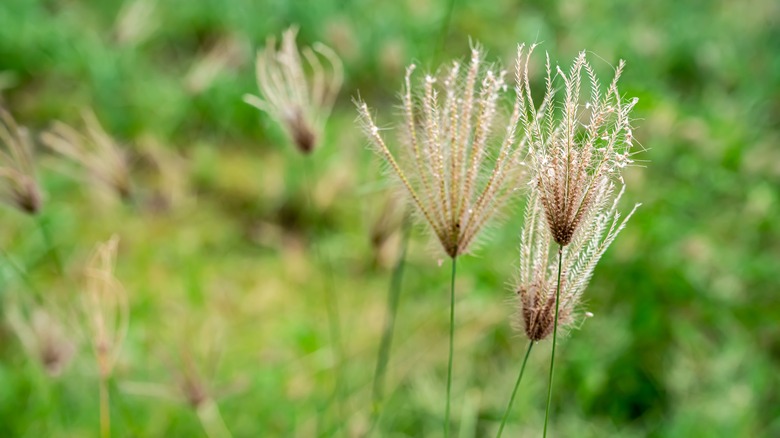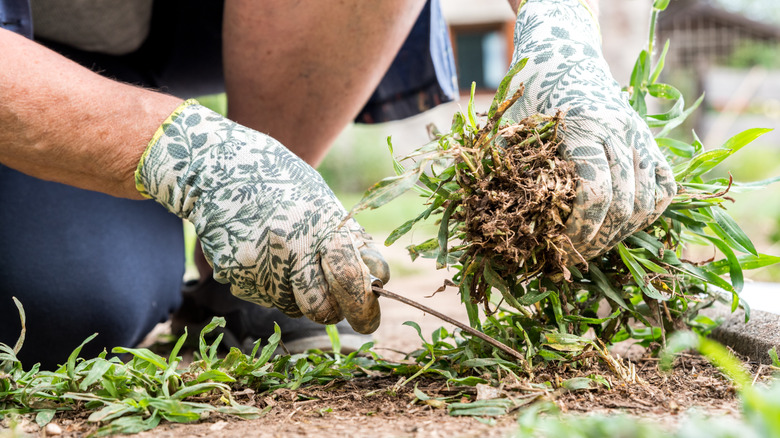If you’re a homeowner with a lawn, you’re likely no stranger to weeds. Among the common garden weeds that can invade your green space — crabgrass and goosegrass are particularly notorious. At first, they might appear similar, but with a closer look and some knowledge, their differences become clear, helping you tackle them more effectively. The light green color and coarse texture of crabgrass, also known as a warm-season annual grass, make it simple to identify. This hardy weed typically hugs the ground, spreading out in a star-like formation similar to crab legs, which is how it got its name. One of the key characteristics of crabgrass is its timing; its seeds start to sprout when the soil warms up to around 55 to 60 degrees Fahrenheit, usually occurring in late spring. This early emergence gives crabgrass a head start in the race for resources on your lawn. Goosegrass, while also a warm-season annual, takes a slightly different approach. It usually makes its appearance a bit later in the growing season. This weed is distinguishable by its lighter, whitish-green coloration and the distinctive flat, prostrate growth of its stems.
Both of these weeds are formidable contenders for space, nutrients, and sunlight in your yard. Their unique growth habits and preferences are what set them apart, making identification crucial for effective control. Regular lawn care and maintenance are key to managing these weeds, as they can both quickly take over if left unchecked.
Impacts of both weeds on the lawn

Their aggressive nature allows them to quickly dominate a lawn if not kept in check. Crabgrass poses a significant threat to nearby grasses like rye, Kentucky blue, and fescue. It’s particularly adept at surviving on poorly maintained lawns, where it can capitalize on weak spots. What makes crabgrass even more challenging is its resilience. This plant demonstrates remarkable resilience to pressures from both pedestrian movement and mechanical equipment, conditions under which most desirable grasses would falter and struggle to recover. This toughness, combined with its prolific seed production, makes crabgrass a relentless foe. A single crabgrass plant can produce up to 150,000 seeds throughout its life, and these seeds can remain viable in the soil for years, leading to recurring infestations.
Goosegrass, while sharing some similarities with crabgrass, has its own unique quirks. It flourishes in compacted soil, making it a common sight in areas that endure heavy foot traffic, such as pathways and playgrounds. A fully-grown goosegrass plant typically generates around 15 to 20 stems, and just one of these plants has the potential to yield up to 50,000 seeds. This high seed output, coupled with its preference for compacted soil, makes goosegrass a persistent problem in lawns and recreational areas. Moreover, goosegrass has a remarkable adaptability to mowing, able to thrive even when mowed closely and frequently.
Management strategies and when to seek professional help

To successfully get rid of these weeds, you’ll need to combine cultural practices with chemical treatments, if necessary. The key is to create an environment where your lawn grasses can outcompete these weeds. For crabgrass, maintaining a healthy, dense lawn is the best defense. This includes proper mowing, watering, and fertilizing. Mow your lawn at the higher recommended height for your grass type to shade out crabgrass seedlings. Regular watering encourages the deep root growth of lawn grasses, making them more competitive. Also, a well-timed pre-emergent herbicide application, usually in early spring, can prevent crabgrass seeds from germinating.
When it comes to goosegrass, addressing soil compaction is crucial. Aeration can be highly effective, as it allows air, water, and nutrients to penetrate the soil more easily, promoting healthier grass growth. Pre- and post-emergent herbicides can also be used, but timing is critical. However, there are times when professional services might be necessary. If your lawn is heavily infested with either crabgrass or goosegrass or if you’ve struggled to control these weeds year after year, it might be time to call in the experts. Lawn care professionals can provide more targeted herbicide applications and offer advice on long-term lawn care strategies. They can also help with more severe issues like soil compaction or severe nutrient imbalances, which can be daunting to tackle on your own.




